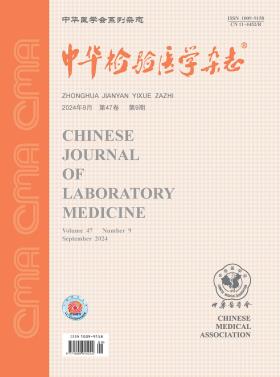16S rRNA测序分析结直肠腺瘤性息肉患者肠道菌群变化
Q4 Health Professions
引用次数: 2
摘要
目的探讨被认为是结直肠癌癌前病变的结直肠腺瘤性息肉(CAP)的肠道菌群变化特征。方法随机收集2017年11月至2018年4月昆明医科大学附属第一医院行结肠镜检查的结肠腺瘤性息肉患者30例(CAP组)和未患腺瘤性息肉的健康人30例(HC组)。内镜下电凝收集活检粘膜,提取DNA扩增16S rRNA V3-V4区,采用Illumina MiSeq平台进行高通量测序。实验结果采用Wilcoxon检验进行分析。结果CAP患者α多样性高于正常对照组(Chao和Ace P<0.01)。门水平Bacteroidetes丰度降低(FC=0.38) (P<0.05)。在属水平上,CAP患者的拟杆菌属(Bacteroides, FC=0.32)、埃希氏菌属(Escherichia, FC=0.57)、鲁米诺球菌属(Ruminococcus, FC=0.42)、蓝藻属(Blautia, FC=0.27)和Dorea (Dorea, FC=0.57)的丰度降低(P<0.05),假单胞菌属(Pseudomonas, FC=2.43)、乳球菌属(Lactococcus, FC=2.84)、地杆菌属(Geobacillus, FC=2.07)和不动杆菌属(Acinetibacter, FC=2.36)的丰度升高(P<0.05)。结论与健康志愿者相比,CAP患者腺瘤组织的丰度和多样性存在显著差异,表明腺瘤性息肉患者肠道菌群存在失衡。肠道微环境失衡可能与CAP的发生发展有关。关键词:结肠肿瘤;腺瘤息肉;胃肠道微生物;RNA,核糖体,16S;高通量核苷酸测序本文章由计算机程序翻译,如有差异,请以英文原文为准。
Analysis of gut microbiota change in colorectal adenomatous polyps patients by 16S rRNA sequencing
Objective
To explore the characteristics of gut microbiota change in colorectal adenomatous polyps (CAP), which has been considered as precancerous lesion for colorectal cancer.
Methods
Thirty patients with colon adenomatous polyps (CAP group) and thirty healthy individuals without adenomatous polyps (HC group) who underwent colonoscopy at the First Affiliated Hospital of Kunming Medical University from November 2017 to April 2018 were randomly collected. The biopsy mucosae were collected by endoscopic electrocoagulation, and DNA was extracted to amplify 16S rRNA V3-V4 region, followed high-throughput sequencing with Illumina MiSeq platform. The experimental results were analyzed using Wilcoxon test.
Results
The alpha diversity of CAP patients was higher than that of healthy controls (Chao & Ace P<0.01). A decreased abundance of Bacteroidetes (FC=0.38) was observed at phylum level(P<0.05). At genus level, the abundances of Bacteroides (FC=0.32) , Escherichia (FC=0.57) , Ruminococcus (FC=0.42) , Blautia (FC=0.27) , and Dorea (FC=0.57) were decreased (P<0.05), but those of Pseudomonas(FC=2.43), Lactococcus(FC=2.84), Geobacillus(FC=2.07), and Acinetibacter(FC=2.36) were increased in CAP patients (P<0.05).
Conclusions
Compared with healthy volunteers, there are significant differences in the abundance and diversity of the adenoma tissue in CAP patients, indicating that there is an imbalance of gut microbiota in the adenomatous polyps. The imbalance of intestinal microenvironment may contribute to the occurrence and development of CAP.
Key words:
Colonic neoplasms; Adenomatous polyps; Gastrointestinal microbiome; RNA, ribosomal, 16S; High-throughput nucleotide sequencing
求助全文
通过发布文献求助,成功后即可免费获取论文全文。
去求助
来源期刊

中华检验医学杂志
Health Professions-Medical Laboratory Technology
CiteScore
0.40
自引率
0.00%
发文量
8037
期刊介绍:
 求助内容:
求助内容: 应助结果提醒方式:
应助结果提醒方式:


